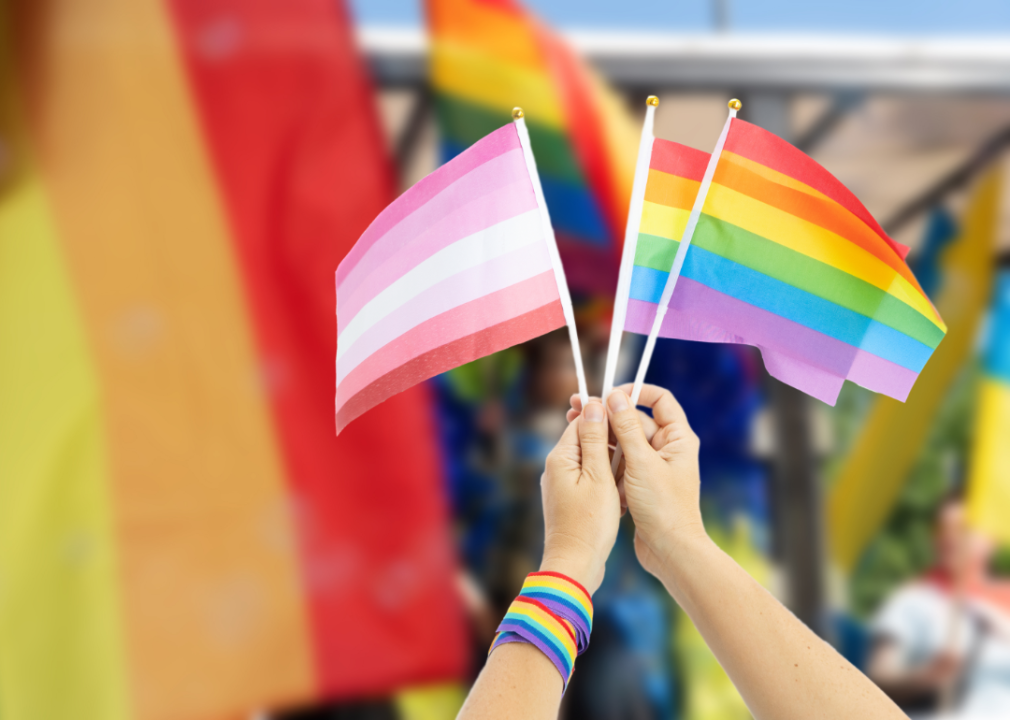Nuva Frames // Shutterstock Young Americans are embracing their LGBTQ+ identities despite the emergence of new, discriminatory laws targeting them around the country. Using survey data from Gallup, Stacker looked at the rising share of Americans who identify as LGBTQ+ and how younger generations are owning their sexual identities in observance of the 35th National Coming Out Day on Oct. 11. About 7% of Americans identify as lesbian, gay, bisexual, transgender, queer, or some other orientation that doesn’t conform to heterosexual and cisgender norms. That percentage is markedly higher–about 20% as of 2022–among members of Generation Z, Gallup reports. This increase comes as politicians take aim at LGBTQ+ people’s civil rights more aggressively than at any other time in history. As of this writing, lawmakers have introduced around 500 bills in state legislatures across the U.S. just this year that have been deemed anti-LGBTQ+ by the advocacy group Human Rights Campaign, leading the nonprofit organization to declare its first national emergency in June. Furthermore, countries such as Canada have warned residents about traveling to the U.S. because of the antagonization against LGBTQ+ people. Despite this, research points to young people coming out earlier than previous generations, said Keygan Miller, interim director of public training for The Trevor Project, an advocacy organization focused on lowering youth LGBTQ+ suicide. “While we can’t attribute this to any one reason, Gen Z has had more access to language, education, and representation around LGBTQ people and identities than any prior generation,” Miller said. Most people who ultimately identify as lesbian, gay, or bisexual have an inkling they don’t conform to a straight identity by the age of 14, according to a survey from the Pew Research Center. Sharing that identity out loud with friends, colleagues, and loved ones, however, can be stressful and sometimes dangerous. Over one-quarter of LGBTQ+ youth have experienced homelessness or housing instability, according to The Trevor Project. Centers for Disease Control and Prevention data shows that they are also four times more likely than their peers to attempt suicide. They’re also more likely to be the victims of violent hate crimes. The concept of National Coming Out Day began in 1988, as the country was in the midst of the HIV/AIDS epidemic. At the time it was first being celebrated, the term “coming out of the closet” was still new for Americans. Scholars have traced its origins to the years following World War II when LGBTQ+ Americans suffered brutal hardship alongside other soldiers, opening their minds and winning their friendship and support in the postwar years. The Trevor Project encourages people to come out on their own terms while recognizing that some may never disclose their sexual orientation or gender identity to everyone in their lives. “There is no right or wrong way to do it,” Miller said. “There are many valid reasons for why a young person may choose not to share their identity with those around them.” Editor’s note: If you or someone you know are experiencing a mental health crisis or thoughts of suicide, call the Suicide and Crisis Lifeline at 988 for professional help. 1 in 5 of America’s youngest generation identify as LGBTQ+
These 2 charts show how Gen Z is changing the makeup of the LGBTQ+ population in the US















